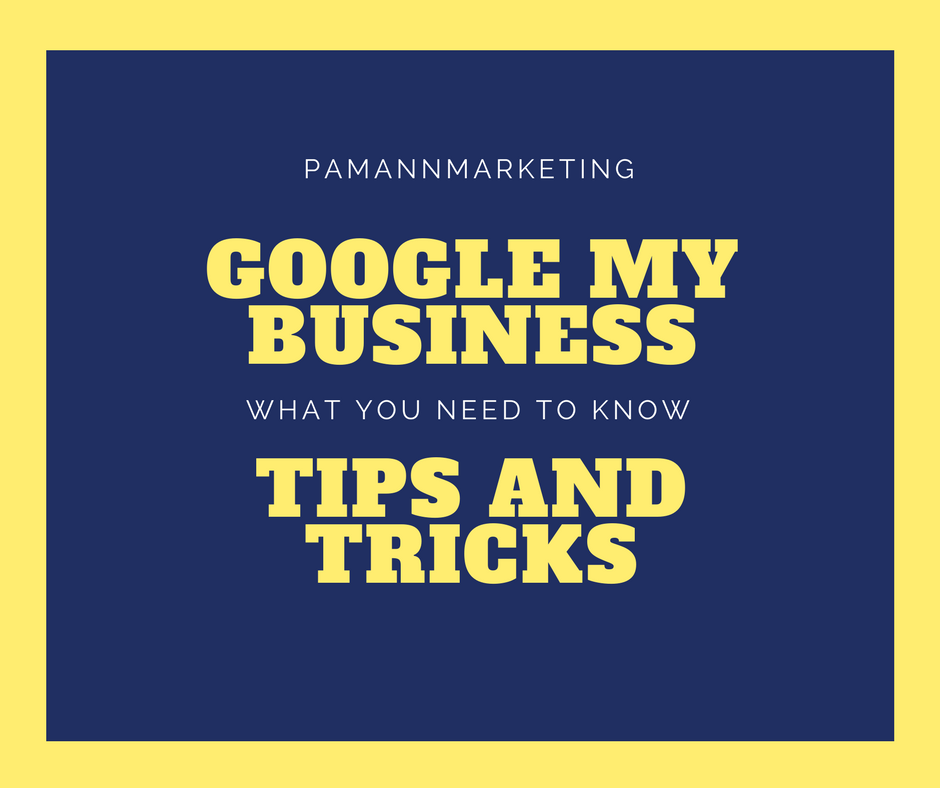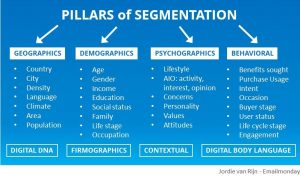— June 23, 2017

What would you do if someone told you there is a completely free tool that can almost instantly help your business gain more visibility in Google search? We bet you’d jump right on it. In reality, however, many business owners are missing the proverbial boat.
The tool we’re talking about is called Google My Business. It’s not that business owners are outright neglecting to use it. The problem is Google has not done a great job promoting it, and an even worse job communicating how it works and why it’s beneficial to businesses.
In this post, we aim to clear all of that up by explaining what Google My Business is, and how it can be used to market your business in search results. Even if you’re already familiar with Google My Business, it’s likely you’ll learn something new about the platform you didn’t already know. Let’s get right to it.
What is Google My Business?
Google My Business is a platform designed to help put local businesses on the map – literally. Information contained in a Google My Business page is used to build a local business’s listing in Google Maps and Google Search. It replaced the much more confusing Google+ Local and Google Places in 2014. Instead of having multiple platforms for managing local businesses on Google, the company streamlined the process with the introduction of GMB. Having a GMB listing essentially makes it easier for searchers to find your business on Google.
Anyone can create a GMB listing for their business, people can even create listings for other businesses, but in order for it to be “official, ” the listing needs to be verified. That requires going through a verification process. The verification process usually involves Google sending a postcard to the business address with a unique code for the owner to input confirming they are in fact managing the listing.
Creating a GMB listing is as simple as going to this landing page and following the prompts. You will, of course, need to have a Google account if you don’t already have one. If there already happens to be a GMB listing for your business, you can “claim” it by going through the aforementioned verification process.
Google My Business has come a long way from the comparatively basic version we saw when it first launched. With the addition of new features, and access to valuable insights, it has evolved from being “nice to have” to “must have.”
In the next sectio, we will go over the updates rolled out to Google My Business over the past few years. By the end, you’ll be fully up-to-date on what you can do with GMB.
Google My Business: Latest Updates and New Features
Google My Business Introduces Photo Galleries
When Google My Business first launched in June 2014, it barely had the ability to display photos. It would take the cover photo from your Google+ business page and use it as the only photo displayed in search results. In February 2015, Google not only introduced the option to customize the photo displayed in Search, it introduced the ability to add multiple galleries of photos. Now you can upload identity photos, interior photos, exterior photos, photos at work, team photos, and any other additional photos you want to show off.
Mobile App
In September 2015, Google released a mobile app for editing your Google My Business listing. The app is available for Android and iOS, and gives business owners the ability to add, edit, or delete information. You can also use the app to upload photos on the fly, which is incredibly useful since there’s likely more phones being used to take pictures these days than actual cameras.
More Options for Business Hours
In November 2015, Google My Business introduced the option to set “special hours” for your business. For example, if your business is closed for a holiday, you can set special hours indicating your business is closed on that particular day. Setting special hours will indicate in search results that your business is closed on a day when it would otherwise be open.
Close And/Or Reopen A Business
In December 2015, Google My Business made it possible to mark a location as permanently closed. With a location being marked as permanently closed, searchers who find your listing won’t end up visiting your business only to find out it’s no longer there. The change isn’t actually “permanent,” however, as there is also the option to reopen a business listing should things happen to change.
Google My Business Introduces Analytics Insights
When we said GMB was basic when it first launched, we meant it. It didn’t even have analytics functionality, which meant business owners had no idea how much traffic their page was getting. It wasn’t until August 2016 that Google rolled out analytics for GMB. That means business owners can now see how many views their page is getting, where visitors are coming from, and how they discovered the page.
More specifically, in addition to overall traffic, business owners can now learn how much traffic is coming from Google Search and how much is coming from Google Maps. GMB insights will also track how many people found your page by searching for your business name, and how many people found it by typing in a related keyword.
Multiple Owners for One Listing
In September 2016, Google introduced the ability to add multiple owners to a single Google My Business listing. Current owners of a listing can send invitations to others and designate them as either an owner or a manager. The key difference between the two roles is an owner has the ability to add other owners and/or managers, while managers cannot. Learn how to add other owners or managers to your page in Google’s help center article.
Bulk Editing of Business Information
In November 2016, Google My Business rolled out an improved editor that includes the ability to bulk edit multiple listings. This feature is available to people who manage 10 or more listings. Bulk editing is accomplished in two different ways. You can either download a spreadsheet of your locations, edit information as necessary, and re-upload the spreadsheet. Or you can edit multiple listings from the GMB dashboard by clicking the checkboxes next to the locations you want to edit and clicking the pencil icon. You can learn more about bulk editing in Google’s help center article.
Email Notifications
Also in November 2016, Google My Business added the option to receive email notifications. Business owners can now receive notifications when customers upload new photos to a listing or leave a new review. Notifications can also be sent whenever Google rolls out new updates to the GMB platform, and Google may also send notifications reminding business owners to keep their listings up to date.
Insights for Photos
In December 2016, photo insights were added to Google My Business. With this addition, business owners can now see how many views their photos received over a period of time. In addition, photo views can also be compared against “businesses like you.” Now you can see how your photos are faring against competitors. Google doesn’t list the names of the competitors you’re being compared against, but at least you can get a general idea of how appealing your photos are in comparison to similar businesses.
Unique Attributes
Also in December 2016, Google rolled out the ability to add unique attributes to your business listing. This could include indicating your location has free Wi-Fi, offers outdoor seating, whether or not it’s wheelchair accessible, or a myriad of other amenities to choose from.
Virtual Offices Not Allowed for Service-Area Businesses
In February 2017, Google My Business made a significant change to its guidelines. GMB pages are no longer allowed to be used for service-area businesses with a virtual office. That means if you run a cleaning company that services a specific geographic area, for example, you can’t create a GMB listing if you run the business out of your home. GMB listings for service-area businesses can only be created if the business has a central office that is staffed during the specified business hours. If you feel like this is unfair to businesses with virtual offices you’re not alone, as the change created a lot of controversy at the time.
Google Makes it Easier to Reclaim Your Listing
In March 2017, Google made it easier for business owners to reclaim ownership of their GMB listing. Small businesses can barely find enough time in a day to run their day-to-day operations, let alone have time for anything else. It’s certainly not uncommon for business owners hand over the reins of their online marketing to an outside agency. Sometimes, if the business relationship goes sour, the agency may refuse to cooperate with the business owner. That could include refusing to transfer ownership of the GMB listing back to the rightful owner.
Previously, if that was the case, it would take a considerable amount of time to resolve the conflict. Google has since automated the process of conflict resolution for GMB listings. Now, business owners can just fill out a simple form. Google will then review the submission and have the issue resolved within 7 days or less.
Google My Business Starts Reporting on Returning Customers
In April 2017, new insights were added to Google My Business showing business owners how much of their foot traffic is made up of repeat customers. The data is gathered using the same method used to collect the ‘Popular Times’ data. It’s collected anonymously from users who have opted into Google Location History. That means Google is now able to track when the same person visits a location more than once.
Add Links to Off-Site Attributes
Also in April 2017, Google introduced the ability to add URLs in your listing that point to pages outside of the GMB ecosystem. If you own a restaurant and have the menu published on your website, for example, you can now include a link to the menu in your GMB listing.
Create a Free Mobile-Optimized Website For Your Business
In June 2017, Google released a free website builder for small businesses that is connected to the Google My Business platform. Having a GMB listing is essential, but it can only take you so far. To get your business to the next level you need to be driving traffic to your very own website. One of the basic expectations of customers today is to search for a business and find their website. Unfortunately, according to Google, 60% of small businesses worldwide still do not have one.
Google is trying to rectify that problem with the release of a simple, one-page website builder. Using the tool, Google will automatically create a website using the information in your GMB listing. From there you can customize it with different templates, as well as add additional text and photos. To be sure, it is not a perfect solution. It lacks many of the elements we believe are necessary for a website to be properly search engine optimized. However, it is arguably better than not having a website at all. Think of it as a stepping stone toward investing in a more full-featured website in the future.
Conclusion
Now you’re completely caught up with everything you can do on the Google My Business platform. As you have learned by now, it is miles ahead of what it was when it was first introduced three years ago. As we said at the beginning of this post, it is a must have for every local business.
Whenever we begin working with a new client, one of the first things we check for is whether or not they have a verified Google My Business listing. If they don’t, we make it our priority to create one and keep it regularly updated.
If you don’t have a GMB listing – what are you waiting for? You have all the resources you need here in this post. If you do have a GMB listing, get the most out of it by reviewing the latest features and ensuring your page is up-to-date.
If you have any questions about anything we covered in this post, please leave a comment down below.
Digital & Social Articles on Business 2 Community
(60)
Report Post





